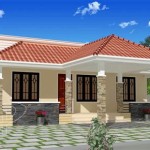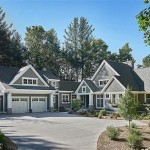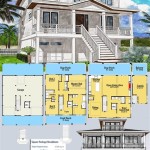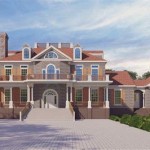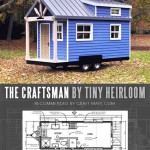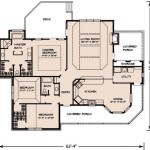Victorian Style Home Floor Plans
Victorian architecture, a dominant style from roughly 1837 to 1901 during the reign of Queen Victoria, encompassed a multitude of sub-styles, each with unique characteristics. These styles, ranging from Gothic Revival to Italianate to Queen Anne, shared common threads in detailing, ornamentation, and overall grandeur. Understanding the floor plan conventions of Victorian homes is crucial for restoration projects, modern interpretations, or simply appreciating the historical context of these residences.
Victorian floor plans often differed significantly from modern open-concept designs. They prioritized compartmentalization, with distinct rooms serving dedicated purposes. This stemmed from societal norms and the emphasis on formality. Privacy and the segregation of spaces for different family members and activities were paramount considerations. The design considerations further reflected the social and economic hierarchies of the era, with space allocation reflecting position and function.
Key Point 1: Compartmentalization and Room Arrangement
The most defining characteristic of Victorian floor plans is their compartmentalized nature. Rather than large, flowing spaces, Victorian homes featured a series of distinct rooms, each designed for a specific purpose. The entry hall, typically a grand space, served as a formal reception area. From there, visitors were directed to the parlor, considered the most formal room in the house and reserved for receiving guests. Dining rooms were separate and dedicated solely to dining, often located near the kitchen but distinctly set apart.
Living rooms, as we understand them today, were not always standard in earlier Victorian homes. The parlor often fulfilled a similar function. As the Victorian era progressed, living rooms became more common, offering a less formal space for family gatherings. Libraries or studies were frequently included, particularly in larger homes, providing a quiet space for reading and reflection.
Bedrooms were typically located on the upper floors, separated from the more public areas of the house. Master suites, as a distinct concept, were not yet fully developed. Instead, multiple bedrooms, often of similar size, were arranged along hallways. Bathrooms, a relatively new feature in many homes during the earlier part of the Victorian era, were also located on the upper floors, though their size and amenities varied widely depending on the homeowner's social standing and budget. Service areas, like the kitchen and laundry, were discretely placed, often at the rear of the house, reflecting the separation of domestic labor from the more formal aspects of Victorian life.
Hallways played a critical role in linking these distinct spaces. They were not merely transitional areas but rather integral components of the floor plan, often featuring intricate woodwork, decorative lighting, and carefully chosen finishes. The hallway system ensured privacy and controlled the flow of traffic within the house.
Key Point 2: Verticality and Story Arrangement
Victorian homes commonly emphasized verticality, often featuring two or three stories, and sometimes even more. This vertical arrangement allowed for a clear stratification of function. The ground floor typically housed the more public spaces, such as the entry hall, parlor, dining room, and sometimes the library or study. The upper floors were predominantly dedicated to bedrooms and bathrooms, providing a more private and secluded area for the family.
The attic, often accessible via a narrow staircase, served various purposes. It might be used for storage, servant quarters, or even as a playroom for children. Basements, common in many Victorian homes, provided additional storage space, housed the furnace or heating system, and sometimes included a laundry area. The basement was often accessible via a separate entrance, further separating it from the main living areas.
Staircases were a prominent feature of Victorian homes, often showcasing elaborate craftsmanship and serving as a focal point of the entry hall. The design and placement of the staircase significantly influenced the flow of traffic and the overall aesthetic of the home. They were not simply functional but designed to impress and reflect the homeowner's taste and social standing.
The height of ceilings was also a defining characteristic. High ceilings, particularly on the ground floor, created a sense of grandeur and spaciousness. This design choice also allowed for larger windows, maximizing natural light and ventilation. The combination of verticality and high ceilings contributed to the overall sense of formality and elegance associated with Victorian architecture.
Key Point 3: Sub-Styles and Floor Plan Variations
While the core principles of compartmentalization and verticality remained consistent across Victorian architecture, specific floor plan variations emerged based on the sub-style. Gothic Revival homes, for example, often featured pointed arches, steeply pitched roofs, and a more asymmetrical floor plan. Italianate homes, inspired by Italian Renaissance architecture, typically showcased square or rectangular floor plans with symmetrical facades, bracketed cornices, and arched windows.
Queen Anne architecture, perhaps the most recognizable Victorian sub-style, was characterized by its asymmetrical facades, turrets, wraparound porches, and elaborate ornamentation. Queen Anne floor plans often incorporated irregular room shapes and a more complex arrangement of spaces. Folk Victorian homes, a simpler and more affordable adaptation of Victorian styles, featured less ornamentation and a more straightforward floor plan, often resembling a rectangular or square box.
Second Empire homes, distinguished by their mansard roofs, frequently featured a regular floor plan with a central hallway and symmetrical room arrangement. Stick-Eastlake homes, characterized by their decorative stickwork and geometric patterns, often incorporated a more open floor plan than other Victorian styles, reflecting the influence of the Arts and Crafts movement. Each sub-style brought its own unique interpretation to the Victorian aesthetic, resulting in a diverse range of floor plan configurations.
Furthermore, the size and layout of a Victorian home varied significantly based on the homeowner's wealth and social status. Grand Victorian mansions featured sprawling floor plans with numerous rooms, multiple staircases, and elaborate detailing. Smaller Victorian cottages, on the other hand, offered a more modest and compact floor plan with fewer rooms and simpler finishes. The floor plan served as a reflection of the homeowner's position in society and their aspirations for upward mobility.
Understanding the floor plan variations associated with each Victorian sub-style is essential for accurate identification and restoration. It allows for a deeper appreciation of the architectural nuances and the historical context of these homes. Examining the floor plan can provide valuable insights into the original design intent and the lifestyle of the people who once inhabited the space.
In conclusion, Victorian home floor plans are a testament to the architectural and social values of the era. Their compartmentalized nature, emphasis on verticality, and sub-style variations reflect the unique characteristics of Victorian life. By understanding these key features, one can gain a greater appreciation for the enduring legacy of Victorian architecture.

Victorian Style House Plan 4 Beds 3 Baths 2518 Sq Ft 48 108 Houseplans Com

Luxury 2 Story Victorian Style House Plan 3357

Victorian Style House Plan 4 Beds 2 5 Baths 2174 Sq Ft 72 137 Houseplans Com

Victorian Style House Plan 5 Beds Baths 4898 Sq Ft 320 414 Dreamhomesource Com

Victorian Style House Plan 4 Beds 5 Baths 5250 Sq Ft 132 255

Victorian Style House Plan 4 Beds 5 Baths 5250 Sq Ft 132 175 Homeplans Com

Victorian Style House Plan 5 Beds Baths 4898 Sq Ft 320 414 Houseplans Com

House Plan 73837 Victorian Style With 4200 Sq Ft 2 Bed Bath

Victorian Plan 3 140 Square Feet 4 Bedrooms 5 Bathrooms 963 00797

Dream Victorian House Floor Plans Blueprints Layouts

